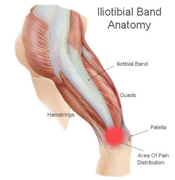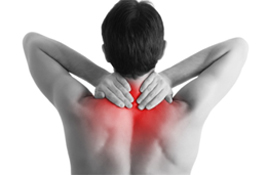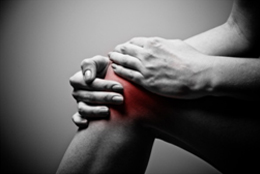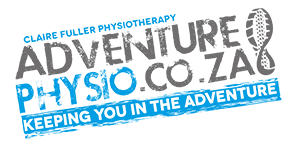Common Mountain Biking Conditions
A few injuries have become apparent for mountain bike and trail running multistage injuries. Here are some of the most frequently seen injuries and what to do if you know you suffer from them during a race event .
Please be sure to see you local physiotherapist first to explain, assess and treat you.
Achilles Tendinopathy
 This sneaky injury is surprisingly on the top of the list for mountain biking. Pain above the heal in the mid section or insertion of the tendon.
This sneaky injury is surprisingly on the top of the list for mountain biking. Pain above the heal in the mid section or insertion of the tendon.
Try your best to avoid it long before you get to the race.
Get yourself screened for any of the risk factors that may predispose you to this injury beforehand.
- Tight calves and hamstrings
- Poor eccentric control
- Incorrect footwear or cleat set up and
- Poor foot biomechanics- flat over pronated feet or high arches with tight calves.
This is an overuse injury to the Achilles tendon that is the result of micro tears and scarring of the tendon fibres, an infiltration of blood vessels (neovascularization) and eventual misalignment of the tendon. The area becomes swollen and extremely tender to touch or move. In the worst cases you'll hear a squeak when you move it.
What to do- minimize the risk factors.
- Get yourself a Groovi decline board and stretch out the calves after each training session
- Work on your eccentric control- slow and controlled heel raises and dips off a step.
- Mobilize-rub-loosen up the soft tissue around the Achillies tendon frequently
- Put the right training in for the specific type of endurance event and terrain- spend some good hours on the long flats and focus on technique.
- Frequently assess your cleat position in the event- too far forward and you'll be putting more strain on the tendon on the downward stroke.
- See article on Achillies repair on blog page.
ITBS- Illiotibial band Syndrome
 The ITB is a band of thick fascia that extends from the lateral side of the pelvis down to the outside of the knee.
The ITB is a band of thick fascia that extends from the lateral side of the pelvis down to the outside of the knee.
Pain and discomfort occur on the outside of the knee due to overuse and excessive friction of the tendon rubbing over the underlying bony prominence at its insertion from the repetitive action of knee flexion/ extension in cycling and running.
There are a good handful of risk factors to get sorted to avoid this baddie. It all starts in the hips and leads to poor knee control and alignment of the tendon .
- poor pelvic stability
- weak gluts medius
- tight piriformis
- weak medial knee stabilizers
What to do-
- Get your hip, knee and ankle biomechanics assessed well in advance
- Strengthen up the gluts meds- the monster walk is a good start.
- Controlled stretching of the tight piriformis and lateral rotators of the hip.
- Work on your core stability and knee control- get yourself a mirror and watch your knee control on the squat/ lunge/step downs.
- Get the correct bike set up for you- seat height, cleat position and tension, and right sized frame.
Neck Pain
 Stop looking like a tortoise on the bike!
Stop looking like a tortoise on the bike!
The long days sitting in the saddle, lead to poor repeated posture. The neck becomes held in extension (the dreaded chin poke) for long periods of time. Poor posture results in fatigue of the stabilizing muscles, tightening and stiffness of the mobilizing muscles and excessive compression of the pain sensitive joints and ligaments of the neck.
What to do
Strengthen up the Deep Neck Flexors and Scapular Stabilizers.
- Practice lengthening out the back of the neck during training and on the long district roads. Don't merely look down- focus on a far object (maybe the finish line) and retract the chin in .Practice tucking the chin in towards your chest, you can use a tennis ball and hold for a good 10 seconds, try maintain this posture- no one's going to look at your double chin, promise!
- Put stickers- pink dots- on your handle bars, computer, steering wheels, mirrors, watches..everywhere, to remind you to tuck in the chin.
- Imagine sliding the shoulder blades down your back- almost as if you are tightening your bra straps( Back pack straps for the guys).
- Have your bike set up looked at and check it throughout your rides. Make sure you are not overreaching or in too much of an upright position, both postures encourage hyperextension of the neck.
- See your physio to treat the joints and to teach you the above!
Lower Back Pain
 The tortoise with a load on its back!
The tortoise with a load on its back!
The culprit is mostly poor prolonged flexed postures on the bike. There is compression of the anterior parts of the intevertebral discs, which allows for the soft jelly disc material to start herniating backwards- picture squeezing a slightly inflated balloon- and then you start loading that disc from the saddle up on the herniated section- not very nice!
The facet joints are also held in a prolonged and poor alignments and these guys are full of nociceptors that switch on the pain buttons.
What to do:
Find your neutral spine and build up the endurance of your postural muscles to maintain this position on your bike.
- Make sure your bike has been set up correctly, and regularly check your saddle height and distance to the handle bars throughout your training and race events.
- Avoid the hunched over position and over reaching on the bike
- Try straighten up into extension on the long flats on the ride.
- Pink dots on the handle bars/ watch/ Garmin to constantly remind you of your neutral spine position.
- After a long ride- go lay prone on the tummy for a good 20minutes and help the disc fluid to settle back to a normal state.
Knee pain- (patello femoral syndrome/ popliteus tendinopathy)
 Biomechanics are important for these long multistage race events, and your knees will start telling the tales.
Biomechanics are important for these long multistage race events, and your knees will start telling the tales.
Poor hip, knee and ankle alignment result in abnormal compression in some areas and overstretching and tension on other areas of the knee joint.
Overuse, misuse and incorrect alignment are some recipes for knee pain.
In the front it is the knee cap not gliding correctly in the groove of the femur, causing irritation, swelling and eventual breakdown of the cartilage and underlying structures.
This can be caused from the following:
- Weak medial knee stabilizers
- Tight lateral structures of the knee-ITB
- Poor hip control and weak stabilizers
- Incorrect foot alignment causing rotation of the tibia on the femur.
- Tight hip flexors
Posterior knee pain also rears its head over a few days of consecutive cycling- The popliteus muscle is one of the stabilizing muscles of the knee and works hard on the bike with cleats. It's similar to getting tennis elbow in the forearm. Popliteus controls the fine movements when you are cycling out of the saddle and is involved in the pivot motion of the knee. Important to check the cleat tightness and position to keep this guy from fatiguing.
What to do:
Work on the Biomechanics of the hips, knees and ankles. Test your lunge or step down in front of the mirror and see where the knee heads up!
- Work on your peddling technique with knee control from the hips and ankles- ask your physio for some training with the Therabands.
- Loosen up all tight structures around the knee and hips- calves, quads, ITB,hip flexors
- Strengthen up medial quads, hip external rotators
- Correct seat height and keep a check on it throughout the ride
- Look at your cleat position and make sure it is not too loose!!!
Common Trail Running Conditions
Ankle sprains
 To make or break your race- make sure those ankles are well strengthened and looked after for the rocky, slippery trails.
To make or break your race- make sure those ankles are well strengthened and looked after for the rocky, slippery trails.
Uneven surfaces, quick and sudden changes of direction, jumping over rocks, puddles and waterfalls all put a high demand on the ankle structures. Most frequently it is the lateral structures t be damaged, less common but more traumatic the medial (inside) structures, and not to be missed the syndesmosis (high ankle sprain).
What to do
Make sure you get the right treatment for the stage of healing of the ankle sprain. The last thing you want is a chronic, impinged, unstable and full of scar tissue ankle. There are loads of rehab programmes available but see your physio to make sure it is ok for the stage of healing you are at.
- Avoid anti-inflammatory for the first 48 hours after an acute injury- these drugs delays the important healing phase needed to build up strong collagen network for the tendon. A pain tablet, some ice, elevate and support the injury is all you need!
- Include some plyometrics in your training programe- agility laders, star jumps, obstacle jumps, skipping, burpee's are a great way to prepare the ankle joint for the unpredictable trails and obstacles.
- Work on your core control- trust your balance and strengthen up the endurance of all the postural muscles.
- Get the correct footwear and support during a race.
- Train on terrains that will be similar to your upcoming event
ITBS- Illiotibial band Syndrome
 The ITB is a band of thick fascia that extends from the lateral side of the pelvis down to the outside of the knee.
The ITB is a band of thick fascia that extends from the lateral side of the pelvis down to the outside of the knee.
Pain and discomfort occur on the outside of the knee due to overuse and excessive friction of the tendon rubbing over the underlying bony prominence at its insertion from the repetitive action of knee flexion/ extension in cycling and running.
There are a good handful of risk factors to get sorted to avoid this baddie. It all starts in the hips and leads to poor knee control and alignment of the tendon .
- poor pelvic stability
- weak gluts medius
- tight piriformis
- weak medial knee stabilizers
What to do-
- Get your hip, knee and ankle biomechanics assessed well in advance
- Strengthen up the gluts meds- the monster walk is a good start.
- Controlled stretching of the tight piriformis and rotators of the hip.
- Work on your core stability and knee control- get yourself a mirror and watch your knee control on the squat/ lunge/step downs.
- Get the correct shoes set up for you.
Knee pain- Patella femoral pain, MCL-ACL-PCL and PLC sprains
 Biomechanics are important for these long multistage race events, and your knees will start telling the tales.
Biomechanics are important for these long multistage race events, and your knees will start telling the tales.
Poor hip, knee and ankle alignment result in abnormal compression in some areas and overstretching and tension on other areas of the knee joint.
Overuse, misuse and incorrect alignment are some recipes for knee pain.
In the front it is the knee cap not gliding correctly in the groove of the femur, causing irritation, swelling and eventual breakdown of the cartilage and underlying structures.
This can be caused from the following:
- Weak medial knee stabilizers
- Tight lateral structures of the knee-ITB
- Poor hip control and weak stabilizers
- Incorrect foot alignment causing rotation of the tibia on the femur.
- Tight hip flexors
- instability of the knee ligaments.
Medial (inside) knee pain can be due to damage to the collateral ligaments or menisus. Often with the sudden changes in direction, slipping on wet muddy trails, fast technical downhills can all cause excessive stretching on the inside of the knee and tearing of the ligaments and cartilage in traumatic cases.
Posterior (back) knee pain also rears its head over a few days of consecutive running- The popliteus muscle is one of the posterior stabilizing muscles of the knee and works hard on the trails. It's similar to getting tennis elbow in the forearm. Popliteus controls the fine,small movements when you are running a technical section. It is important to make sure the calves and hamstrings are not too tight.
What to do:
Work on the Biomechanics of the hips, knees and ankles. Test your lunge or step down in front of the mirror and see where the knee heads up!
- Work on your running technique with knee control from the hips and ankles- ask your physio for some training with the Therabands.
- Loosen up all tight structures around the knee and hips- calves, quads, ITB, hip flexors
- Strengthen up medial quads, hip external rotators
- Get the correct footwear and suppot needed for the specific event.
- Look at the wear and tear on the soles of the shoes to see where you are placing more pressure.
Neck and shoulder pain
Achilles Tendinopathy








